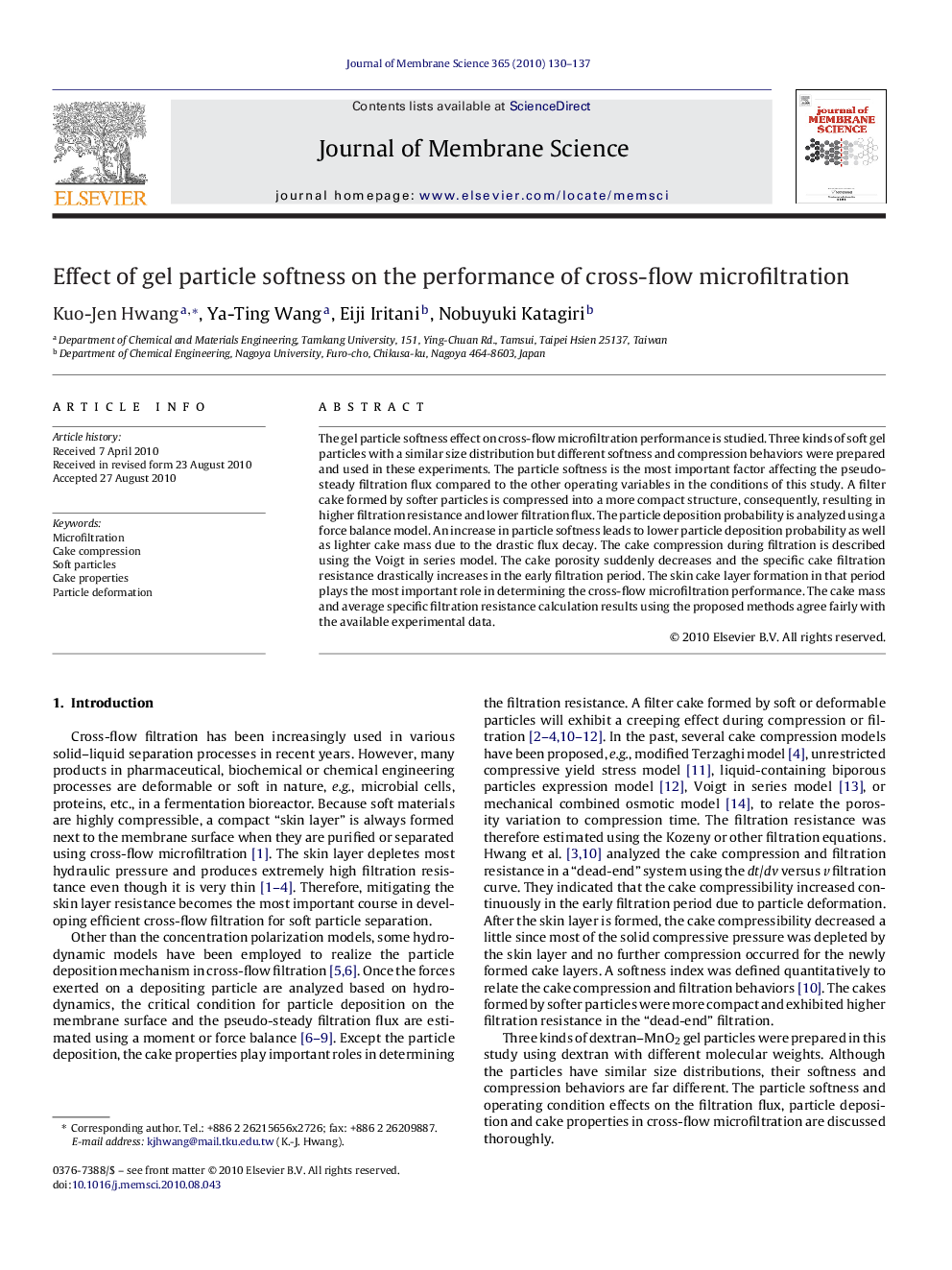| Article ID | Journal | Published Year | Pages | File Type |
|---|---|---|---|---|
| 636092 | Journal of Membrane Science | 2010 | 8 Pages |
The gel particle softness effect on cross-flow microfiltration performance is studied. Three kinds of soft gel particles with a similar size distribution but different softness and compression behaviors were prepared and used in these experiments. The particle softness is the most important factor affecting the pseudo-steady filtration flux compared to the other operating variables in the conditions of this study. A filter cake formed by softer particles is compressed into a more compact structure, consequently, resulting in higher filtration resistance and lower filtration flux. The particle deposition probability is analyzed using a force balance model. An increase in particle softness leads to lower particle deposition probability as well as lighter cake mass due to the drastic flux decay. The cake compression during filtration is described using the Voigt in series model. The cake porosity suddenly decreases and the specific cake filtration resistance drastically increases in the early filtration period. The skin cake layer formation in that period plays the most important role in determining the cross-flow microfiltration performance. The cake mass and average specific filtration resistance calculation results using the proposed methods agree fairly with the available experimental data.
Research highlights▶ Effects of particle softness on the cake properties and filtration flux were studied. ▶ An increase in particle softness led to lower particle deposition probability. ▶ Most cake compression occurred in the early period of filtration. ▶ The cake mass and average specific filtration resistance could be estimated accurately.
